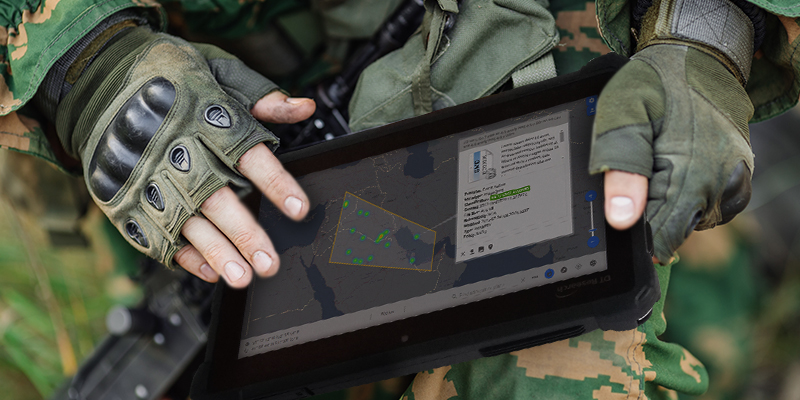In today’s fast-paced world, the demand for durable and reliable technology is paramount. One of the most promising advancements in this arena is the advent of solar-powered rugged devices. These devices are designed to withstand harsh environments while harnessing the power of the sun to operate efficiently. As we explore this topic, we aim to provide a comprehensive understanding of how these devices work, their benefits, and their potential impact on various industries.

Understanding Solar-Powered Rugged Devices
At their core, solar-powered rugged devices are built to endure extreme conditions, such as high temperatures, dust, and moisture, all while using solar energy as their primary power source. This combination makes them ideal for use in remote locations where traditional power sources are not readily available.
The Technology Behind Solar Power
Solar-powered devices utilize photovoltaic cells to convert sunlight into electricity. These cells are integrated into the design of rugged devices, allowing them to function independently of external power supplies. This technology not only enhances the device’s longevity but also reduces its environmental footprint.
Rugged Design Features
The rugged nature of these devices is characterized by their robust construction. They are often encased in materials that are resistant to shock, vibration, and other environmental stresses. This ensures that they can continue to operate in challenging conditions without compromising performance.
Benefits of Solar-Powered Rugged Devices
The advantages of adopting solar-powered rugged devices are manifold. Firstly, they offer unparalleled reliability and durability, making them suitable for a wide range of applications. Secondly, their independence from traditional power sources means they can be deployed in remote or off-grid locations with ease.
Environmental Impact
By relying on solar energy, these devices contribute to a reduction in carbon emissions and reliance on fossil fuels. This makes them an eco-friendly alternative for businesses and individuals looking to minimize their environmental impact.
Cost-Effectiveness
While the initial investment in solar-powered technology may be higher, the long-term savings on energy costs and maintenance can be substantial. This makes these devices an economically viable option for many industries.
Applications Across Industries
Solar-powered rugged devices are finding applications across a wide range of industries. From agriculture to defense, their versatility and reliability make them an invaluable asset.
Agricultural Innovations
In agriculture, these devices are used for monitoring and data collection, helping farmers optimize their operations and increase yield.
Military and Defense
For military operations, the rugged nature of these devices ensures that they can withstand the rigors of combat environments, providing reliable communication and data transmission.
Telecommunications
In telecommunications, these devices help maintain connectivity in remote areas, ensuring that communication networks remain operational even in challenging conditions.
The Future of Solar-Powered Rugged Devices
The future of solar-powered rugged devices looks promising. As technology continues to advance, we can expect to see even more innovative applications and improvements in efficiency and durability.
Research and Development
Ongoing research and development efforts are focused on enhancing the performance of solar cells and improving the ruggedness of device materials. This will lead to improved efficiency and longer lifespans for these devices.
Integration with IoT
The integration of solar-powered rugged devices with the Internet of Things (IoT) is another exciting development. This will enable seamless connectivity and data sharing across various platforms, further enhancing their utility.
Challenges and Considerations
Despite their many advantages, solar-powered rugged devices are not without challenges. Factors such as initial cost, technological limitations, and environmental considerations must be taken into account.
Cost Barriers
While these devices offer long-term cost savings, the initial investment can be prohibitive for some businesses and individuals. However, as technology advances and production costs decrease, we can expect to see more affordable options in the future.
Technological Limitations
Current technological limitations may affect the efficiency and performance of these devices. Continued research is needed to overcome these challenges and enhance the capabilities of solar-powered technology.
Conclusion
In conclusion, solar-powered rugged devices represent a significant step forward in the realm of durable technology. Their ability to operate in harsh environments while utilizing renewable energy makes them an attractive option for a wide range of industries. As we continue to innovate and improve upon this technology, we can look forward to a future where solar-powered rugged devices become an integral part of our daily lives.

FAQs
1. What makes a device ‘rugged’?
A rugged device is designed to withstand harsh environmental conditions, such as extreme temperatures, dust, water, and shock. These devices are built with durable materials that protect them from damage and ensure reliable performance.
2. How do solar-powered devices work?
Solar-powered devices use photovoltaic cells to convert sunlight into electricity. These cells are integrated into the device, allowing it to operate independently of traditional power sources.
3. What industries benefit most from solar-powered rugged devices?
Industries such as agriculture, military, telecommunications, and transportation benefit from the use of solar-powered rugged devices. Their reliability and ability to operate in remote locations make them ideal for these sectors.
For more information on how to design electronics for harsh environments, visit this external resource. Additionally, you can explore related topics on rugged electronics in railway systems, power protection for rugged systems, and hazardous area-compliant electronics on our internal blog.


